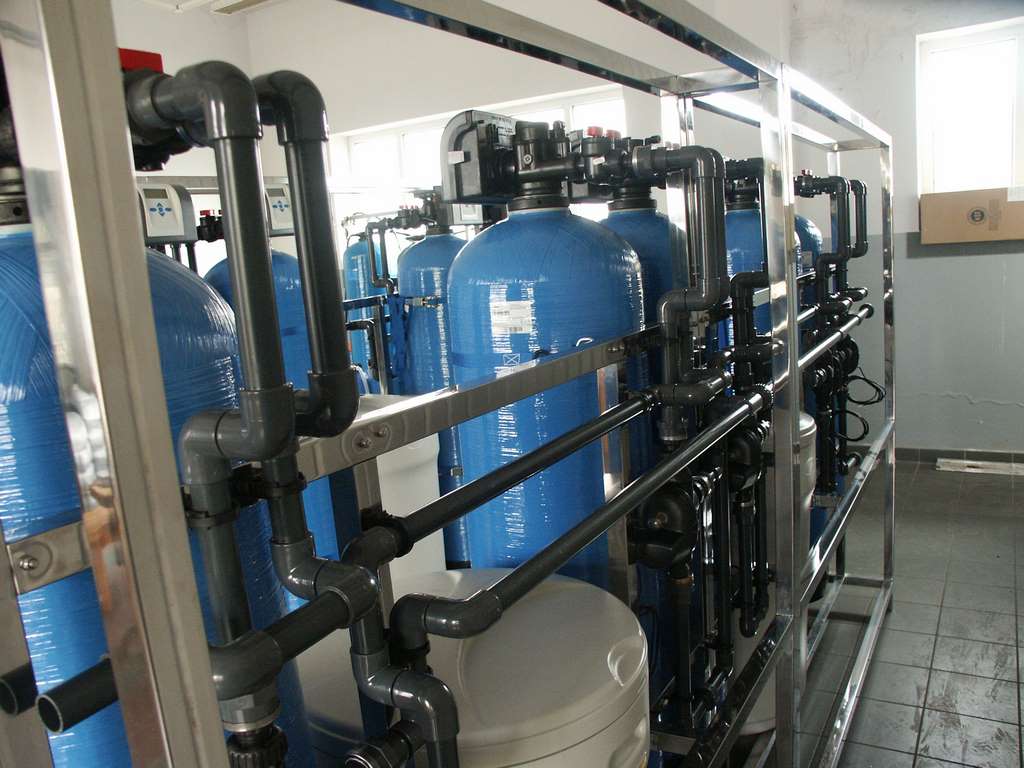OPERATING PRINCIPLE AND GENERAL STATION DESIGN
The water treatment station will be mounted on a skid frame. At the inlet, a mechanical filter with a washable cartridge will be installed (automatic backwash available on request). Next, in a DUO system, two pairs of filters (2 × 5 m³/h) with straight-through heads filled with specialized ion-exchange media will be installed. This is a safe solution for two reasons: first, there are two independent systems, which is important in the event of a controller failure in one part of the system; second, powering only one section means there is no need to switch to three-phase power.
pH control and the regeneration of the ion-exchange columns will be supervised by microprocessor controllers. Regeneration will be carried out using multi-port valves in a chemical-resistant version. Regeneration start will be set on a volumetric basis. The system is equipped with shut-off valves on the water supply. The installation will be made of PVC. The WTP will be connected via a bypass to the existing water network. The station operates continuously. A water meter and an electric pump will be installed in the container.
Scope of Potentially Hazardous Substances Removed (from Drinking Water)
– Heavy metal cations (such as iron Fe, manganese Mn, copper Cu2+, nickel Ni2+, lead Pb2+, etc., as well as particularly toxic ones such as mercury Hg2+, cadmium Cd2+, thallium Tl2+, arsenic As3+, and others).
– Anions such as nitrates NO3−, nitrites NO2−, phosphates PO43−, chromates CrO42−, cyanides CN− (including metal–cyanide complexes), arsenites AsO33− and arsenates AsO43−, sulfides S2−, and many others: inorganic and organic anions such as phenolates PhO−, anionic detergents R–SO3−, etc.
– Harmful and hazardous microorganisms: bacteria, fungi, viruses, algae, protozoa (including Clostridium and Cryptosporidium).
Radioactive contaminants and chemical warfare agents.
– Proper regeneration: depending on the contaminants present in the water and the installation location.
Note: use treated water for rinsing to avoid reducing the operating efficiency of the ion-exchange bed/column!

Summary
The MSUW Aquafix A 10 system is a self-contained unit with its own control system, mechanical filtration, and pumps.
In the basic configuration, it delivers 10 m³/h in two separately operating trains of 2 × 5 m³/h. This arrangement provides greater safety in the event of a failure and conveniently avoids the need for three-phase power for the pumps. It simplifies operation and further enhances mobility. The system is mounted on an independent container platform with the dimensions of a standard 20-foot container. It operates fully automatically.



